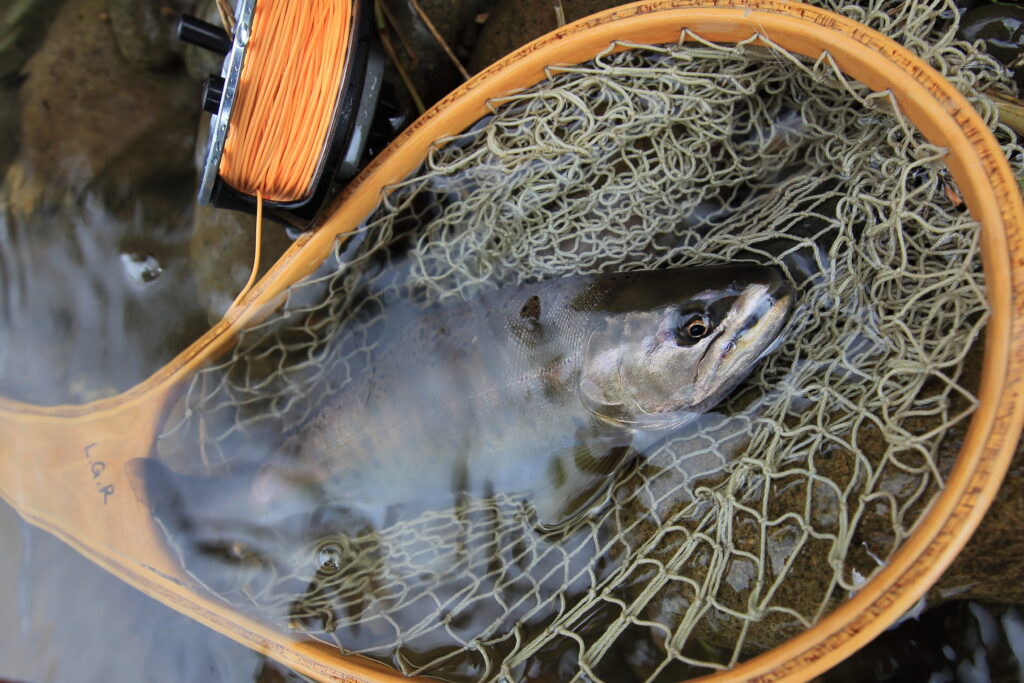Cherry Salmon or Trout?
Trout, Salmon, or Steelhead – Understanding the Pacific’s Smallest Salmon
Late August means migration for northern Japan’s cherry or masu salmon (Oncorhynchus masou) These are the smallest Pacific salmon in terms of weight and length. The majority of cherry salmon spend their entire lives inland without venturing to the sea.The more rebellious cherry salmon are cursed to cruise the northern pacific before returning home up to two years later. Fly fishing for this species in Japan is only permitted at sea or at the outlet of rivers in brackish waters. Fly fishing for cherry salmon above the river mouth in Japan is prohibited. Most flyfishing anglers in Japan target these fish in late spring before the fish enter their natal rivers to spawn from September through November. Young cherry salmon hatch in the upper mountain streams and hatch between January and February. After 1-2 years of life in the headwaters, some of these fish will mysteriously migrate into lower sections of the river before entering the sea or reservoirs in early winter. The remaining fish will spend their life entirely in the headwaters feeding on a diet of caddis, mayflies, midges, craneflies and smaller fish.
Another unknown factor is that the majority of the “searun” fish are mostly female that grow five times as large as their male counterparts. By May, these returning cherry salmon lose their silvery hue and regain their parr marks once in freshwater. Unlike most pacific salmon species, cherry salmon continue to feed once in freshwater on other fish and insects in the lower reaches of rivers. Summer rains summon cherry salmon to charge upstream toward the cool clear waters of birth. When water temperatures drop in September, cherry salmon gain a reddish to black hue. Males grow teethy snouts and spar with each other as they move to prime spawning habitat in the upper reaches of cold mountain streams.
Cherry salmon can be found as far north as Kamchatka, Russia and in North and South Korea. In South Korea, there are approximately 20 streams that hold cherry salmon. Some of Korea’s streams have “Lakerun” or potamodromous populations that migrate through creeks, rivers, and reservoirs and are often thought to be “searun” but generally that is not the case as those fish are truly the fish of 100,000 casts. Currently there is no data on North Korea’s trout or salmon populations. Fly fishing in Japan or securing a flyfishing guide in Japan isn’t possible due to Japan’s strict travel restrictions at the time of this writing.

Fly Fishing Travel in Focus – Northern Japan’s Cherry Salmon. Pictured above is a landlocked cherry salmon taken in Japan in 2019
For more information about flyfishing in Japan – Send inquires to [email protected]
